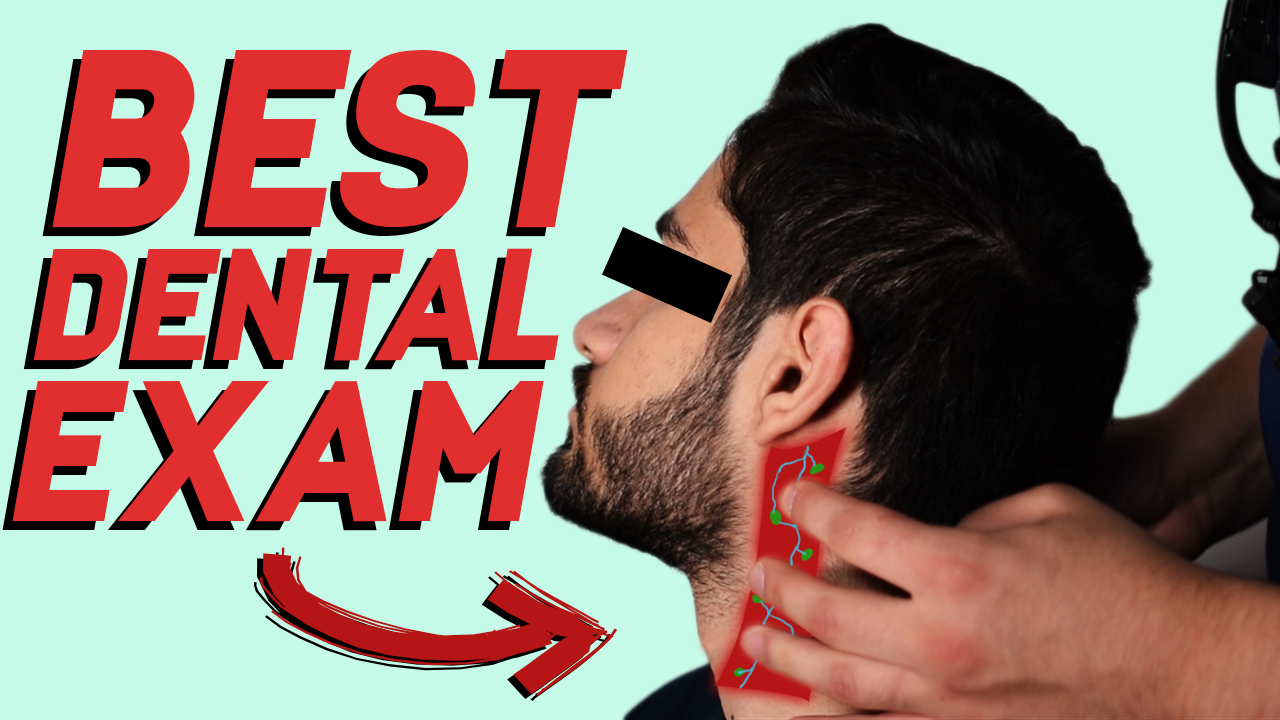In this blog, we cover the core principles of restoring root treated teeth (RTT) including the indication for posts, suitable cores, discussing when cuspal coverage would be appropriate and how long we should wait before doing so.
This is a summary of the full webinar presented by Dr. Kushal Gadhia on Student ACE courses. If you are a student, you can sign up to watch the full webinar among loads of other webinars on topics such as occlusion, periodontics, dentures and much more by following this link: 🌐 https://www.students.ace-courses.co.uk/
Why root treated teeth are different?
RTT are more brittle and access cavities weaken teeth depending on how much tooth tissue has been lost. You have about a 20% weakening if the occlusal surface has been lost, a 40% weakening if you’ve lost mesio-occlusal or disto-occlusal surfaces and a 60% weakening for an mod. This varies based on the extent of the ridge lost, if the functional cusp has been lost and/or if the patient has a parafunctional habit, so ultimately, we need to do something to restore the strength at the end of the root canal treatment. The more dentine that is lost, the more likely that a root filled tooth will fracture. It’s also important to note that as you use irrigants during endodontic treatment, these irrigants change the physical properties of teeth by decreasing the flexural strength of dentine and increasing the brittleness. The survival of a tooth is reduced by 5 things.
1. the loss of both marginal ridges.
2. If the tooth is used as an abutment for a fixed or removable prosthesis. This by the way should not be done because we’ll end up compromising the root treated tooth due to it’s inability to cope with as much load as a sound tooth.
3. If it’s a molar.
4. Narrow deep probing defects which indicates the presence of a crack or a fracture and finally.
5. if there is in fact a crack. The more of these you have, the worse the prognosis for a tooth.
Principles of restoring root treated teeth
The first principle we’re going to be talking about is to preserve as much tooth structure as possible. So wherever you can, do an onlay instead of a crown for example. It is increasingly believed that the ability of a root filled tooth to resist a fracture is directly related to the amount of tooth tissue remaining. The more tooth tissue remaining, the less likely it is to fracture but we should also be aiming to reduce the amount of stress the tooth will endure. The second principle to discuss is about replacing the old restoration before carrying out your RCT. If someone presents with a previous restoration, an mo composite or amalgam, or a previous crown for example, and there is a need for RCT, you should remove the previous restoration, even if it looks clinically and radiographically sound. The reason for this is there is a 65 or 66% chance that there is secondary caries present underneath. So you should remove the restoration or the old crown instead of accessing through it, clear the caries and then build it back up with good margins before starting your endo. The third principle we will talk about is ensuring the patient in pain free before obturating favouring doing endodontics over 2 appointments instead of 1. So if your patient came back for you to obturate but they were still in pain, you should do more chemical debridement, put more medication down the canals close to the working length, temporise and send the patient away before reviewing them, ensuring they are symptom free before bringing them back in for obturation. The fourth principle is to provide a good coronal seal. There has been controversy over what is more important, the RCT or the quality of the restoration afterwards. A 1995 study supports the claim that it’s the restoration after which determines the prognosis of the tooth. You might have come across a patient with a, not so great, root treated tooth but they’ll tell you they’ve had no problems with the tooth for over 20 years. In this case, without a doubt, they would have an amazing coronal seal. However, later in 2000, there was evidence to show that both a good RCT and a high quality restoration were important. That said, you should aim to do both well but if for whatever reason the root canal treatment didn’t go exactly as you would have liked, it’s so important to make sure that you get that optimal coronal seal, otherwise the endo will fail. The fifth principle we will speak about is the necessity of Ferrule. That 1.5-2mm’s of coronal dentine all the way around the tooth and most importantly at the functional load bearing areas. Without the ferrule effect, the crown would have less resistance to fracture loads and will dislodge quite easily. For example, if a maxillary incisor which has a crown had forces occurring labially from an occluding mandibular incisor, the path of dislodgement would be in the labial direction. To reduce this, you should increase the ferrule on the palatal aspect of the upper incisor by preparing the surface equi-gingivally instead of supra-gingivally and those extra couple millimetres will provide a significant difference in resisting occluding forces. This way it’s still cleansable but also provides you with the greatest amount of retention and resistance to those labial forces, reducing the likelihood of dislodgement when the lower incisor is in function or when a person goes into anterior guidance. This is an example to help visualise the importance of ferrule in the functional load bearing areas especially.
Posts
Now lets move onto posts. For posts, 3mm of root structure apically showed improved fracture resistance for teeth restored with a post and core. It’s important to note that posts serve no purpose other than to hold a core. They don’t reinforce teeth, instead they actually weaken them and long and parallel posts are generally better then tapered and screw posts. The ferrule of 1.5-2mm is needed and the greater the height, the greater the resistance features that you will have with the crown. Posts can be pre-fabricated or cast in a lab. You would use a cast post if you wanted the post to be customised to the shape of the canal and this is beneficial when you have a really large canal and want to limit dentine removal. With a pre-fabricated post on the other hand, you need to prepare the dentine in the canal to match it to the shape of the post. This can be really destructive, especially in larger canals. The disadvantage of using a cast post is that you will need a temporary post while your lab makes you a customised post and your temporary post can not provide the same hermetic coronal seal that a pre-fabricated post and core can provide. However, there are a couple ways to reduce the likelihood of the invasion of micro-organisms during this temporisation period while the lab fabricates your post. The first one is to cut back the GP 2mm further than where you want your post to be and fill the canal with 2mm’s of IRM. By doing this you’re creating an extra seal. The second thing is to do some immediate dentine sealing. We won’t get into all the benefits of IDS today and hopefully we’ll cover it in a future video but for now, if you’re unfamiliar with what IDS is, there’s some great evidence based content online that you should check out and we’ll leave some links to read about it in the description. Very briefly, it’s when you sandblast, etch, prime and bond to seal the dentine, instead of keeping the dentine exposed between the time that you temporise and fit the definitive restoration.
Cuspal coverage
So then do all root treated teeth need cuspal coverage? For anterior teeth, if the only tooth tissue lost is that of the access cavity or the access cavity and some proximal tissue, then a composite restoration would be sufficient. However, if there is an access cavity and multiple restorations or a very large restoration, then a full coverage crown would be needed. For premolar teeth, there’s a bit of a grey area but this should give some guidance as to what you should be doing depending on the presentation. For molars you should almost always be providing cuspal coverage. One scenario when you don’t need cuspal coverage is when the molar has a very conservative access and is completely intact otherwise. When we say very conservative here, we’re referring to an optimal isthmus width of less than a third of tooth tissue removed between the cusps. If there is anymore than a third of tooth tissue lost between the buccal and palatal cusps or if there is a ridge or a cusp missing, then you will need cuspal coverage. This paper shows that root treated posterior teeth are 6 x more likely to be lost if they didn’t have cuspal coverage as compared to if they did have cuspal coverage.
Core materials
So you can choose to place a nayyar core with amalgam or you can place a composite core and each have their advantages and disadvantages. For a nayyar core you can prep 2-4mm into the canal and again the use of a 2mm IRM plug will provide an extra seal in the canals beneath the nayyar core. However, an amalgam restoration will shine through so if you’re planning for an aesthetic restoration like an emax crown or if you intend on having a bonded restoration, it would be preferable to have a composite core. Another alternative is to do an endo crown where the “core” so to speak is fabricated in the lab for you and is attached to the crown. If you want to learn more about that, Dr. Gadhia talks a bit more about what is involved and the advantages and disadvantages of doing an endo crown, so you can check that out for free on the ace courses website if you sign up as a student. We’ll leave a link for that in the description below if you’ve not already signed up.
How long do we wait before restoring root treated teeth?
NG et al 2008 says there are 4 things which significantly improve the outcome of primary root canal treatment and they are as shown on the screen now. The 4th on the list is a final coronal restoration. We should all consider the immediate coronal seal as the final part of the root canal treatment and this links back to making sure the patient is symptom-free before obturating. It shouldn’t be the case that you have obturated and the patient is still in pain and now you’re waiting for them to get out of pain before doing the coronal seal. Instead, this coronal seal should be done immediately after the root canal treatment.
📱 Follow Ace courses on Instagram: www.instagram.com/ace_courses
📱 Follow us on Instagram: www.instagram.com/two.dentists
Check out our other content
If you’re interested, feel free to check out our other Blogs, our Instagram page, or our YouTube channel for more.









